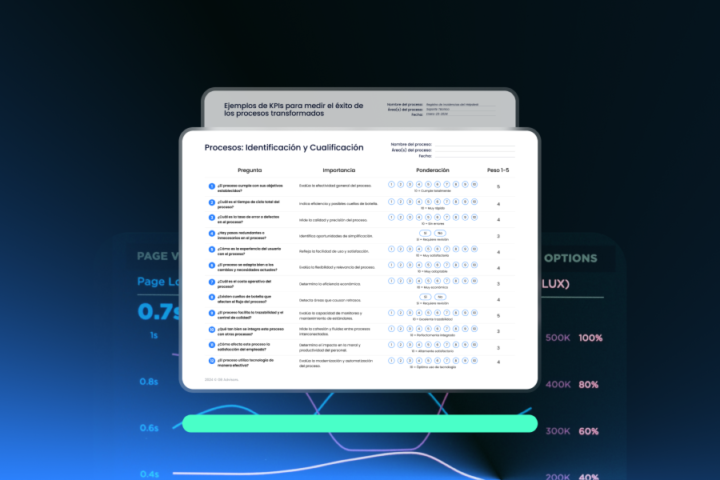 The digital age has been marked by an increase in the number of user activities in cyberspace and; consequently, by an augmentation in the volume of information that organizations must handle. As a result, new security breaches have emerged and have forced analysts around the world to look for new strategies to protect their businesses. From this search, a new trend called cyber-resilience has emerged.
The digital age has been marked by an increase in the number of user activities in cyberspace and; consequently, by an augmentation in the volume of information that organizations must handle. As a result, new security breaches have emerged and have forced analysts around the world to look for new strategies to protect their businesses. From this search, a new trend called cyber-resilience has emerged.
Read on and learn how this practice can take your organization beyond attack prevention; to help you respond quickly and effectively to the occurrence of any type of incident.
Cyber-resilience: The new organizations’ must-do
Parallel to technological progress is the constant development of the capacity of cyber-criminals to penetrate the systems of any organization and generate damage of all kinds. As a result, and thanks to the continued sophistication of these threats; organizations have been forced to constantly plan new tactics to ensure the protection of their systems. It is in this context that cyber-resilience is born.
Cyber-resilience or cyber-resilience is a relatively new term, related to the ability of organizations to recover quickly from deliberate attacks; or incidents involving the use of information and communication technologies.
The aim of cyber-resilience is to strengthen cybersecurity practices to achieve an approach that goes beyond attack prevention. As a result, organizations can develop strategies that enable the rapid recovery of their essential services; by reducing the magnitude of the impact of any incident or attack.
Advantages of cyber-resilience:
The adoption of cyber resilience can bring multiple benefits to the companies, among them we have:
- Competitive advantage: by allowing the company to recover quickly to ensure the continuous delivery of its services.
- Reduction of the economic impact of business disruption: by minimizing the magnitude of the attack; and promoting the implementation of effective response strategies.
- Improved Risk Management: by allowing the organization to develop greater proactivity in dealing with risks, vulnerabilities, and contingencies.
How do you achieve a cyber-resilient organization?
To achieve cyber resilience, you should follow some essential steps:
 #1 Evaluate
#1 Evaluate
First of all, it is indispensable that you identify all the organization’s attack surfaces. To make this, you can carry out an evaluation of the infrastructure and data contained in the systems. The objective is to identify security gaps in order to rank them according to their level of urgency and to establish a good vulnerability management strategy.
#2 Protect
Once you carried out the risk assessment, you must take the necessary measures to ensure the protection of the systems. The idea is to minimize the risk of attack by safeguarding each of the elements that interact in the systems, such as data, infrastructure, and cloud environments.
#3 Monitor
The best way to ensure an opportune response to downtimes or any other incident is to develop the ability to quickly identify the sources of attacks and their scope.
At this stage, we can appreciate one of the most important differences between cybersecurity strategies and cyber-resilience strategies. Cybersecurity focuses mainly exclusively on preventing malicious activity; without considering the possibility of a successful attack.
For cyber-resilience, on the other hand, prevention procedures are as important as successful attacks’ responsiveness. Therefore, in addition to proposing security measures, this practice also proposes the creation of a contingency plan that allows for the immediate restoration of systems after an incident.
#4 Solve
Vulnerability scanning and detection makes sense only if it is used to improve the response time to an attack.
That’s why at this point; you should develop a problem-solving plan that clearly describes the steps to take in the event of an incident. That means you need to define precisely the activities and responsibilities that each member of the security team must assume in order to respond effectively to the appearance of a threat.
#5 Recover
One of the most important advantages of cyber-resilience is that it offers companies a new perspective in which users are truly aware that there is a possibility that their systems may be attacked. As a result, organizations can be prepared to meet any security challenge and carry out an efficient continuity plan.
This plan should include the implementation of strategies that allow the rapid restoration of those services affected by the attack. Keep in mind that to guarantee the effectiveness of this step it is necessary to count on backup systems that allow the immediate recovery of the information.
Some extra tips for achieving a successful cyber-resilience
 Adapting to a different approach can be challenging for some organizations. That is why it is important that you also ensure a cultural change in the company during the process of adopting cyber-resilience. Remember that the success of these security practices is based primarily on the coordinated work of the users involved. So, seek to prioritize people over processes and make evident to them; all the benefits that cyber-resilience can offer the company.
Adapting to a different approach can be challenging for some organizations. That is why it is important that you also ensure a cultural change in the company during the process of adopting cyber-resilience. Remember that the success of these security practices is based primarily on the coordinated work of the users involved. So, seek to prioritize people over processes and make evident to them; all the benefits that cyber-resilience can offer the company.
Success is also based on expertise and the use of appropriate tools. Organizations can achieve simply essential tasks like the identification of vulnerabilities, the continuous monitoring, and protection of systems; with an effective software solution.
Let us help you choose the one that best suits your goals. Contact us for more information on how to keep your systems protected with a high-quality security tool.



